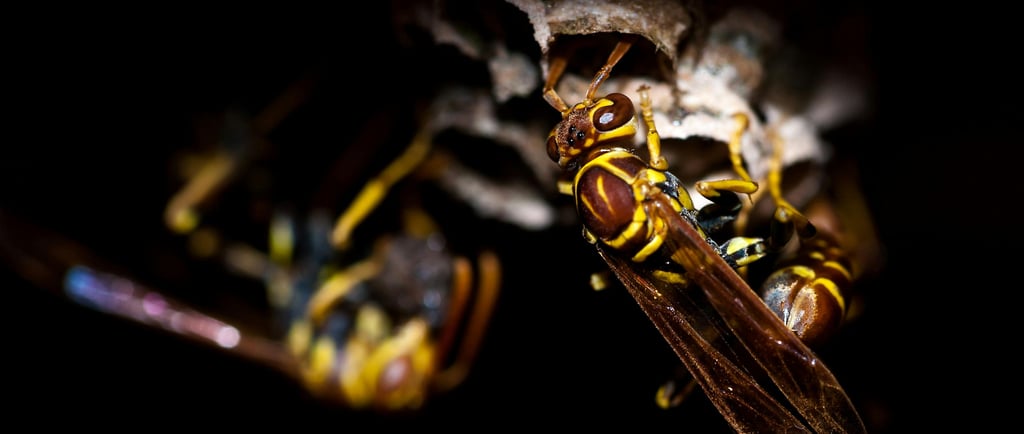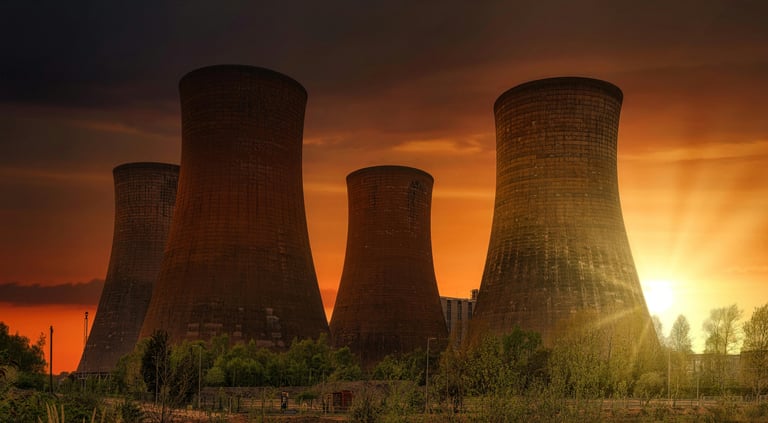Radioactive Wasp Nest Discovered at Former Nuclear Weapons Site, Exceeding Safety Limits by Tenfold
"A radioactive wasp nest found at a former nuclear weapons site in South Carolina shows radiation 10x above safety limits, revealing lingering contamination risks at Cold War-era facilities."
Wiktyman
8/1/20252 min read


A startling discovery at one of America's most sensitive nuclear facilities has raised new questions about long-term radioactive contamination. The U.S. Department of Energy (DOE) recently reported finding a wasp nest with radiation levels more than ten times higher than federal safety limits at the Savannah River Site (SRS) in South Carolina. This 310-square-mile complex, which once produced plutonium and tritium for nuclear weapons during the Cold War, now serves as a storage site for radioactive waste.
Discovery and Immediate Response
On July 3, 2024, radiation control personnel at the F-Area Tank Farm—a section of SRS containing underground nuclear waste storage tanks—identified an abandoned wasp nest exhibiting unusual radiation signatures. Following protocol, crews sprayed the nest as a precaution before conducting tests, which revealed contamination levels far exceeding regulatory thresholds.
Interestingly, the site's managing contractor, Savannah River Mission Completion (SRMC), later clarified that no live wasps were present when the nest was examined. This distinction is crucial because it suggests the radiation came from environmental contamination rather than an active biological transfer through living insects.
Why This Finding Matters
The incident highlights the persistent environmental legacy of nuclear weapons production. According to the Environmental Protection Agency (EPA), radiation exposure can damage cellular DNA, increasing cancer risks if protective measures fail. While the DOE insists there is no current public health threat, the discovery underscores the challenges of monitoring and containing historic contamination at aging nuclear sites.
Root Cause and Long-Term Implications
DOE investigators determined the nest's radioactivity stemmed from "legacy contamination"—residual pollution from past operations—rather than leaks in current waste storage systems. Similar cases have occurred before; wasps and other insects are known to incorporate radioactive particles into nests or hives when building materials are contaminated.
The agency acknowledged a reporting delay, attributing it to comparisons with prior incidents of radioactive insect activity at SRS. This suggests such findings, while unusual, are not unprecedented at former nuclear production sites.
Ongoing Monitoring and Public Assurance
Officials emphasized that no additional cleanup is required, as the nest posed no continuing hazard. However, the event reinforces the need for long-term environmental surveillance at former nuclear sites, where natural processes can sometimes redistribute historic contamination in unexpected ways.
The Savannah River Site, operational since the 1950s, remains a focal point for nuclear waste management and environmental remediation efforts. While progress has been made in cleaning up Cold War-era pollution, discoveries like this serve as reminders that the site's radioactive legacy will require vigilant monitoring for decades to come.

